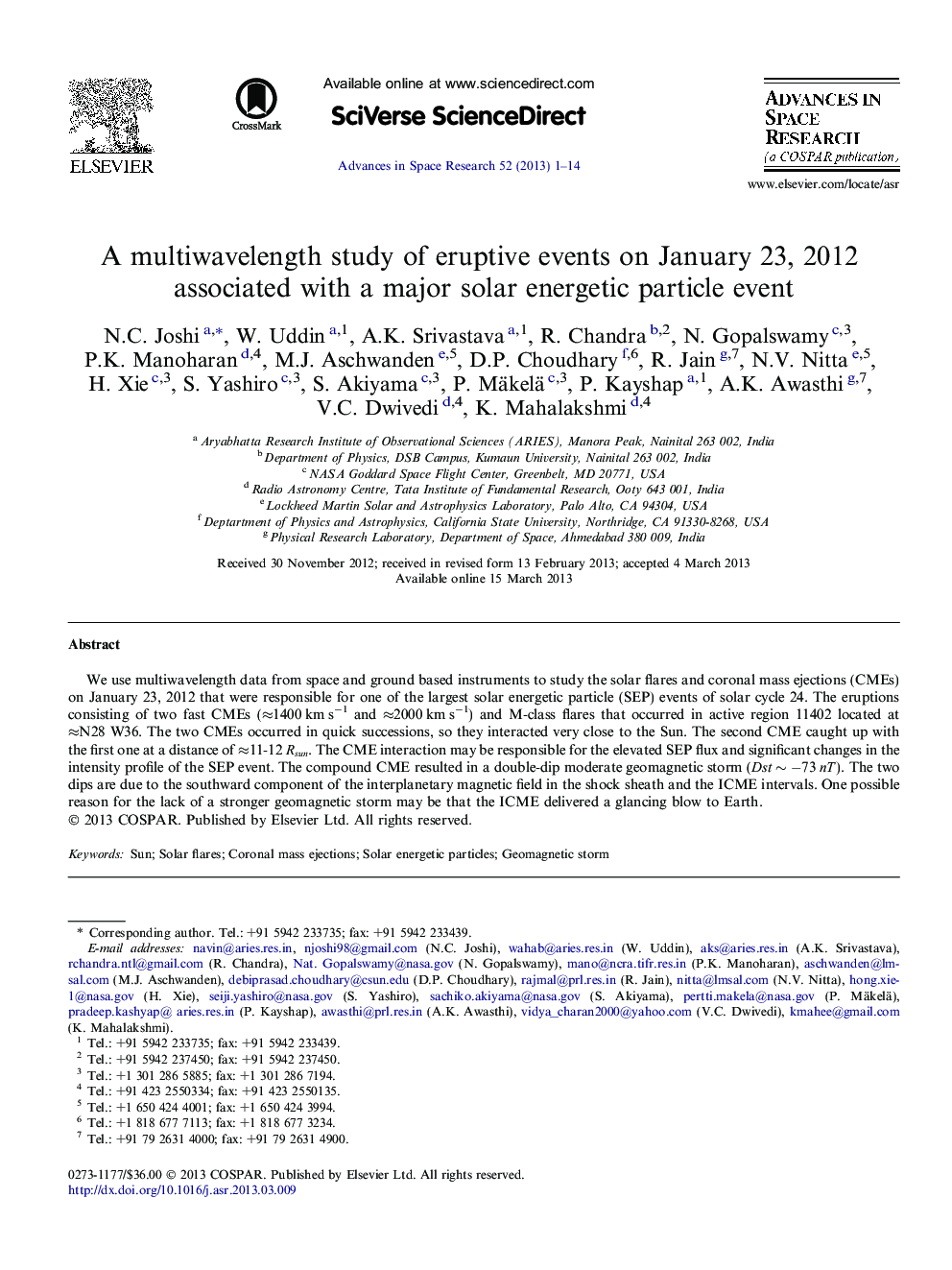| Article ID | Journal | Published Year | Pages | File Type |
|---|---|---|---|---|
| 1764219 | Advances in Space Research | 2013 | 14 Pages |
Abstract
We use multiwavelength data from space and ground based instruments to study the solar flares and coronal mass ejections (CMEs) on January 23, 2012 that were responsible for one of the largest solar energetic particle (SEP) events of solar cycle 24. The eruptions consisting of two fast CMEs (â1400 km sâ1 and â2000 km sâ1) and M-class flares that occurred in active region 11402 located at âN28 W36. The two CMEs occurred in quick successions, so they interacted very close to the Sun. The second CME caught up with the first one at a distance of â11-12 Rsun. The CME interaction may be responsible for the elevated SEP flux and significant changes in the intensity profile of the SEP event. The compound CME resulted in a double-dip moderate geomagnetic storm (Dstâ¼-73nT). The two dips are due to the southward component of the interplanetary magnetic field in the shock sheath and the ICME intervals. One possible reason for the lack of a stronger geomagnetic storm may be that the ICME delivered a glancing blow to Earth.
Related Topics
Physical Sciences and Engineering
Earth and Planetary Sciences
Space and Planetary Science
Authors
N.C. Joshi, W. Uddin, A.K. Srivastava, R. Chandra, N. Gopalswamy, P.K. Manoharan, M.J. Aschwanden, D.P. Choudhary, R. Jain, N.V. Nitta, H. Xie, S. Yashiro, S. Akiyama, P. Mäkelä, P. Kayshap, A.K. Awasthi, V.C. Dwivedi, K. Mahalakshmi,
